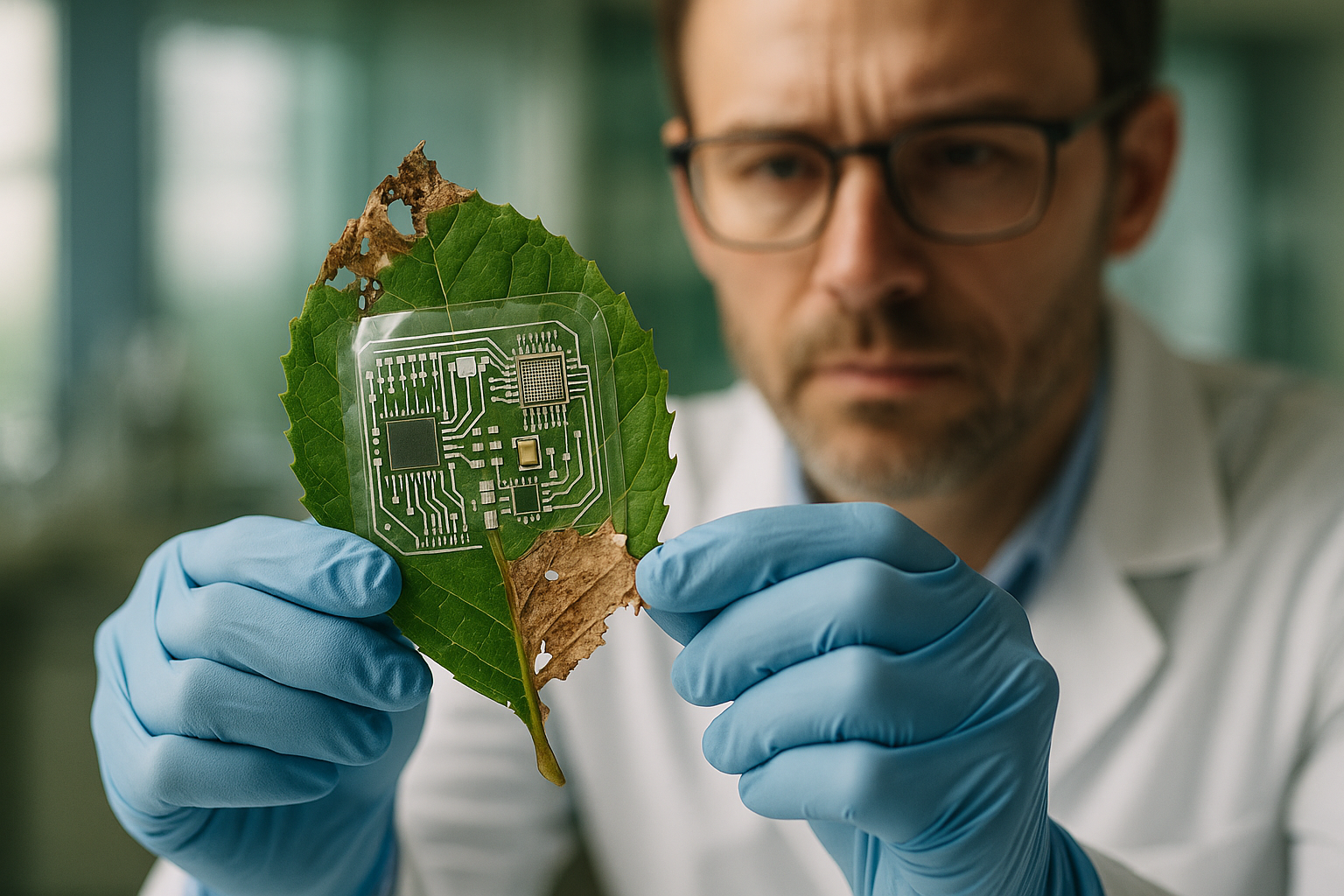Unwrapping the Enigma of Biodegradable Electronics
Biodegradable electronics, a term that seems to be plucked straight from a sci-fi novel, is an emerging field of technology that is making waves for its potential to revolutionize the way we handle electronic waste. This article dives into the history, current developments, and possible future impacts of this fascinating technology.

A Glimpse into the Past
The concept of biodegradable electronics, also known as transient electronics, sprung up as a response to the growing issue of electronic waste. Traditional electronics are made of materials that do not decompose, causing significant environmental pollution when discarded. The idea of creating electronics that could break down naturally over time was born in the early 2000s. Early attempts focused on encapsulating electronic components in biodegradable materials, but these attempts had limited success due to the non-biodegradable nature of the electronic components themselves.
The Present: Biodegradable Electronics in Full Swing
Fast forward to 2012, a scientist named John Rogers from the University of Illinois introduced the first fully biodegradable electronic device. This device was a transient version of a silicon MOSFET, a type of transistor that forms the basis of most electronic devices today.
Today, the field of biodegradable electronics is bustling with activity. Scientists have developed a range of devices, including biodegradable sensors that can monitor environmental conditions, and even temporary medical implants that dissolve in the body after serving their purpose, eliminating the need for surgical removal.
The Future: A Greener, Cleaner Planet
As for the future, the possibilities are exciting. With the ongoing advancements, we can expect to see more widespread use of biodegradable electronics. Apart from their environmental benefits, these devices have potential applications in a variety of fields like medicine, agriculture, and environmental monitoring.
The cost of these devices, however, remains a point of concern. While the prices will likely drop as the technology matures and scales up, the current estimated price range for a biodegradable sensor, for instance, is between $100 and $200, significantly higher than their non-biodegradable counterparts.
The Market Impact
Biodegradable electronics could potentially disrupt the electronics market. As consumers and businesses become more conscious of their environmental footprint, the demand for such devices is likely to surge. Moreover, regulatory pressures to reduce electronic waste could also drive the adoption of these devices.
A Paradigm Shift in the Making
Biodegradable electronics represents a paradigm shift in our approach to electronics. The idea of devices that fulfill their function and then quietly fade away without leaving a trace is a powerful one. While there are challenges to overcome, namely the high cost and the need to match the performance of traditional electronics, the potential benefits make this a field worth watching. As we continue to innovate and push the boundaries of what is possible, biodegradable electronics may soon become a common feature in our tech-driven world.






